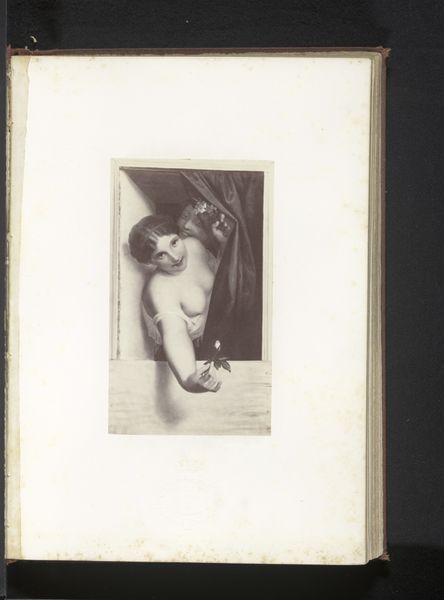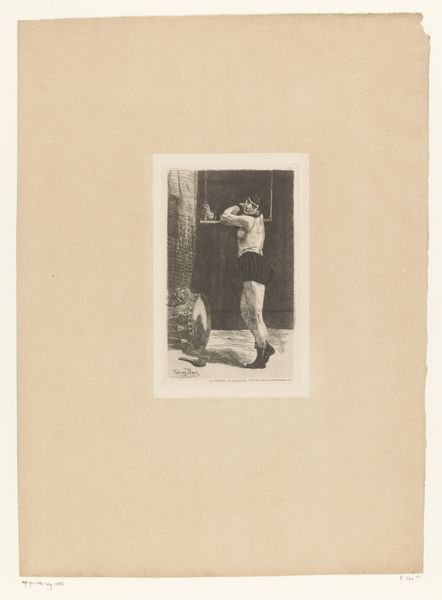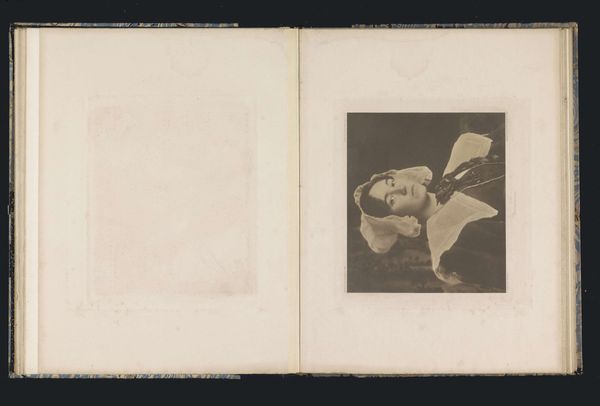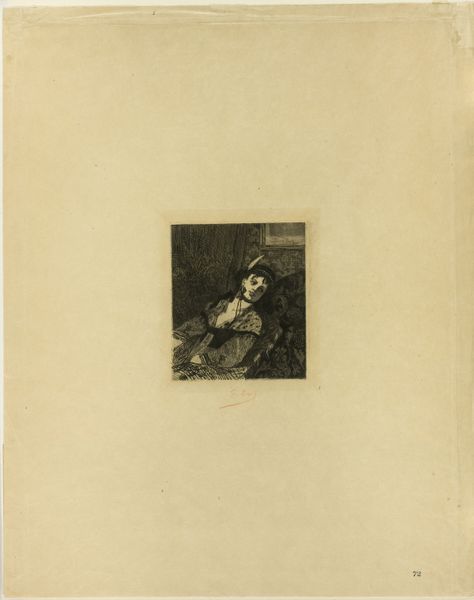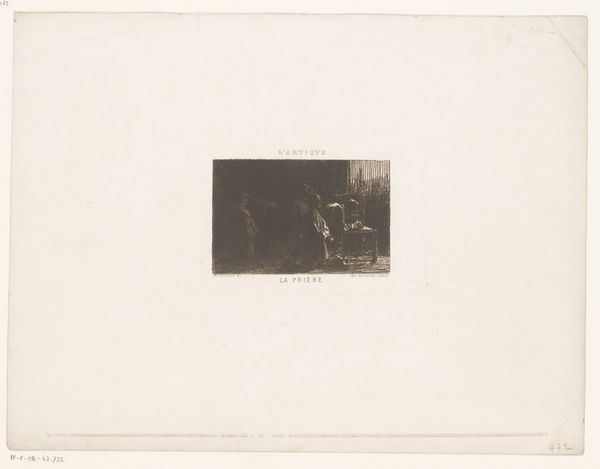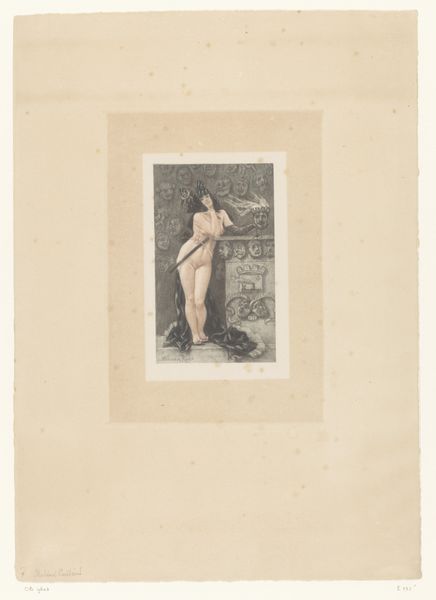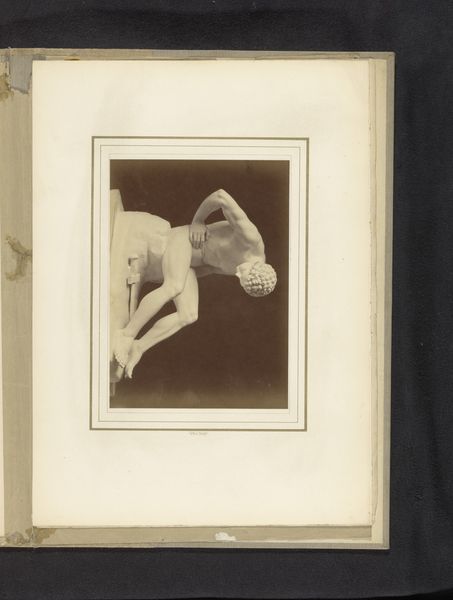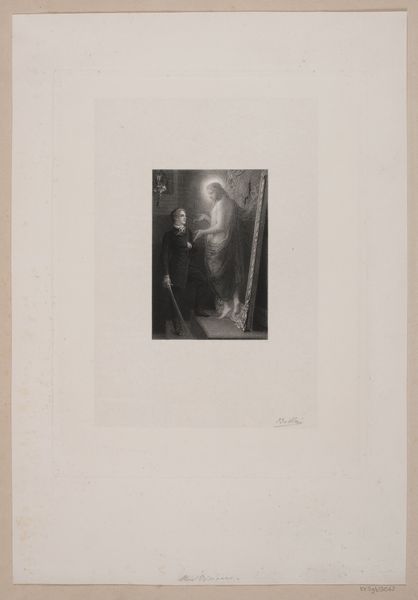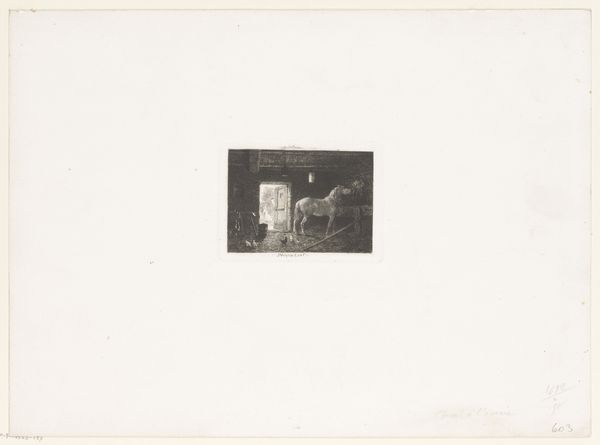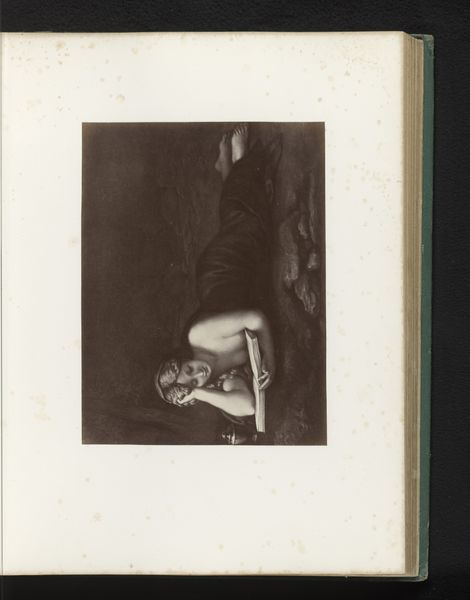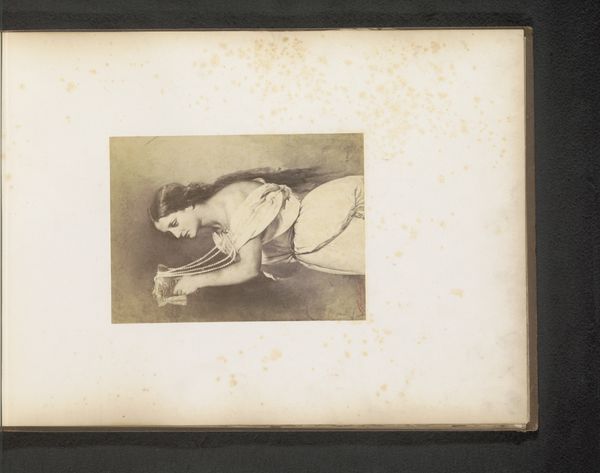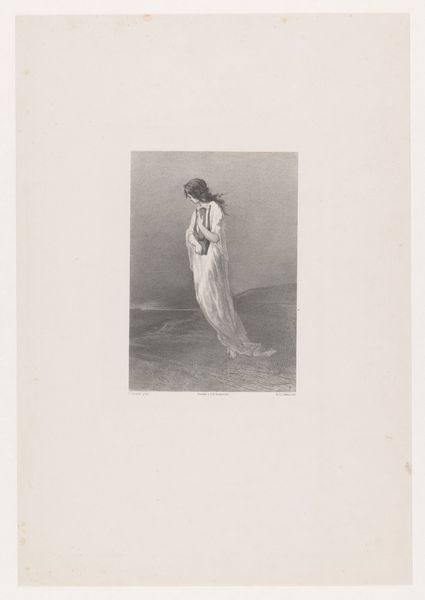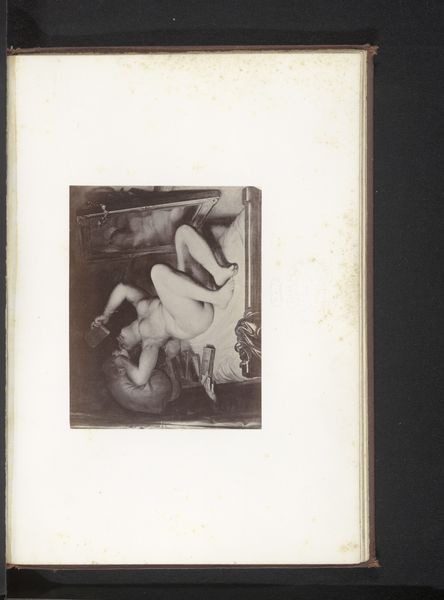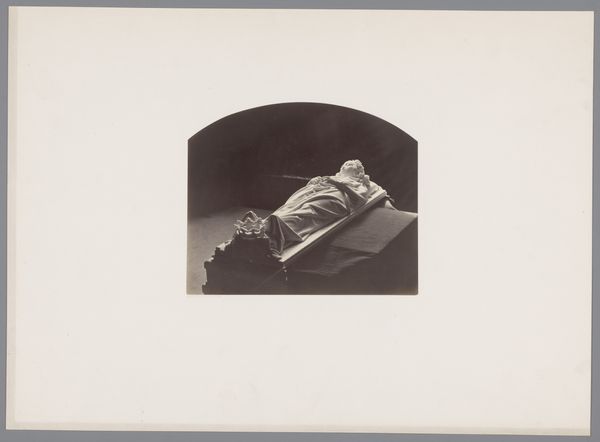
Dimensions: height 80 mm, width 112 mm
Copyright: Rijks Museum: Open Domain
Editor: This is 'Christus aan het kruis,' or 'Christ on the Cross,' by V.C. Andrigo, created before 1909. It's an engraving, giving it this stark, almost haunting feel. I'm struck by the artist’s choice to focus solely on Christ’s upper body—it feels incredibly intimate and vulnerable. What do you see in this piece beyond the immediate religious context? Curator: I see a powerful intersection of religious iconography and social commentary. This isn't simply a depiction of Christ's suffering; it's an examination of power, sacrifice, and the marginalized. The 'old engraving style' tag is interesting, as it places the work within a history of representing such themes, raising questions of tradition and its potential subversion. The figure’s gaze, the etched lines creating shadow and light, what might that communicate about the individual's struggle against oppressive structures? Editor: That's interesting. It didn’t occur to me to read the individual's struggle into a religious scene like this, especially one done in this more traditional style. Curator: Think about it: The artist, working before 1909, was engaging with complex societal debates about religion, justice, and representation. The scale and medium—a print—also speak to its potential circulation, perhaps even as a form of social critique. We must always question whose voices and stories are privileged in historical narratives, and consider art’s role in either reinforcing or challenging those structures. How might interpretations shift based on gender, race, or class? Editor: That's a really different way to think about it, one that really opens the work up to considering social issues beyond its own time. Thanks! Curator: My pleasure! By critically engaging with art history, we reveal the continued relevance of art objects in contemporary social justice movements.
Comments
No comments
Be the first to comment and join the conversation on the ultimate creative platform.
